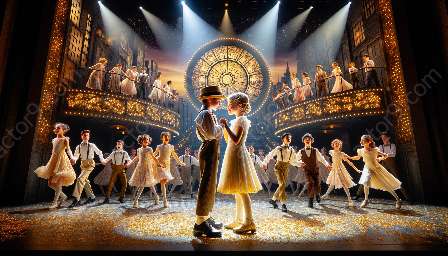Broadway performers are known for their powerful and dynamic voices, which are essential for delivering captivating performances. However, the rigorous demands of performing in musical theater can take a toll on their vocal health and longevity.
Understanding the techniques for vocal preservation and longevity is crucial for sustaining the quality of performances and safeguarding the well-being of Broadway performers. This article explores the strategies and practices that contribute to maintaining healthy and resilient vocal cords, while enhancing the longevity of performers' voices.
The Importance of Vocal Preservation and Longevity
Before delving into specific techniques, it's essential to understand why vocal preservation and longevity are paramount for Broadway performers. The unique nature of Broadway performances, characterized by live singing, intricate choreography, and intense acting, places significant strain on performers' vocal cords. Without proper care and maintenance, vocal fatigue, strain, and potential long-term damage may occur, compromising the performers' ability to deliver top-tier performances.
Techniques for Vocal Preservation and Longevity
1. Vocal Warm-Up and Cool-Down
Effective vocal warm-up routines are vital for preparing the vocal cords before performances, and cool-down exercises aid in relaxation and recovery post-performance. These exercises include gentle vocalization, breathing techniques, and vocal massage to promote flexibility and prevent strain.
2. Proper Breathing Techniques
Developing strong breath support through diaphragmatic breathing allows performers to sustain long notes and phrases without straining their vocal cords. This technique also reduces tension in the neck and shoulders, promoting overall vocal health.
3. Vocal Hydration
Ensuring adequate hydration is crucial for maintaining vocal cord lubrication and preventing dryness. Broadway performers are advised to consume sufficient water and limit caffeinated and alcoholic beverages, which can dehydrate the vocal cords.
4. Vocal Rest and Recovery
Allowing sufficient rest periods between performances and rehearsals is essential for preventing vocal fatigue and overuse. Periods of vocal rest and vocal exercises executed by professional vocal therapists contribute to rejuvenating the vocal cords.
5. Professional Vocal Training
Continuous vocal training and coaching with experienced professionals can help performers develop and sustain proper vocal techniques, enhancing vocal endurance and agility over time.
Impact on Broadway Performances
The implementation of these vocal preservation and longevity techniques significantly enhances the quality and sustainability of Broadway performances. By prioritizing vocal health, performers can deliver consistent and powerful vocal performances, captivating audiences while minimizing the risk of vocal injuries and strain.
Contributions to Musical Theater
These techniques also play a pivotal role in sustaining the overall caliber of musical theater productions. The long-term preservation of performers' vocal abilities ensures the enduring success of iconic musicals and contributes to the evolution and innovation of the musical theater industry.
Conclusion
In conclusion, vocal preservation and longevity techniques are essential for Broadway performers to cultivate resilient and enduring vocal capabilities. The effective application of these techniques not only safeguards the well-being of performers but also elevates the quality and sustainability of Broadway performances and musical theater as a whole.



































